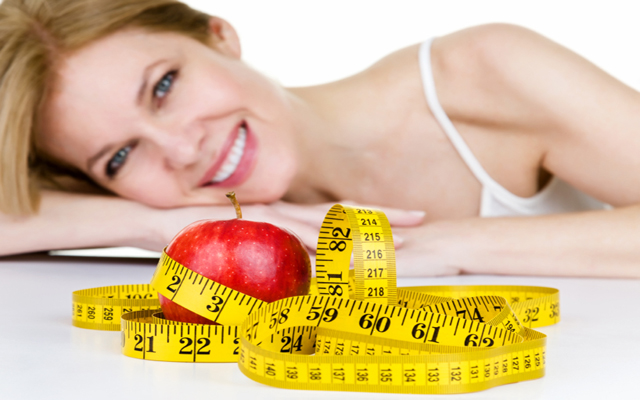
A healthy diet for children includes fruits and vegetables. Vegetables and fruits are excellent sources of iron, vitamin D, B12 and vitamin D. Some eggs are even fortified with omega-3 fatty acids, which help improve brain development in kids. A cup of fruit has about 12 calories. Most fruits can be cut into small pieces. Fresh or dried, you can also serve fruit with peanut butter for a snack.
Juice should only be consumed in moderation. Limit your intake to one or two drinks per day if you wish to control your child's sugar intake. A bowl of real fruits is better than juice. It will improve their diet with fiber and other important nutrients. Additionally, juice can cause them drink too much between meals. This could pose a danger to their health. You need sodium to maintain body fluids and nerve function. But too much sodium can increase your risk of developing heart disease or high blood pressure. Processed foods generally contain high amounts of sodium.

A new study revealed that 60 percent of children's food products are unsafe. Researchers surveyed 156 products to find that more than 50% contained added sugar, 15% contained saturated fat, and 7% had salt. The researchers also investigated how companies label their healthier foods as well as what they contain. These foods were often highly processed and the ingredients weren't listed. Moreover, they often lacked the essential vitamins and minerals that children need to grow up to be healthy and strong.
Parents should be aware of the health risks associated with sugary and processed foods. Parents need to be aware of the health risks associated with sugary and processed foods. Avoid processed foods and focus on healthy foods. Instead, parents should encourage children to eat food high in vitamins and minerals. It will help them build positive eating habits in the future. There are many ways to get your child to eat more fruits and vegetables. Set an example for your child by providing a healthy diet.
It is important that children eat a variety of fruits and vegetables. They should also be limited in their intake of juice. Each meal should contain at minimum one serving of each. For children aged between one and 14 years, the recommended daily fruit-and-vegetable intake is one cup per day for a toddler and three cups per day for a teenager. A good source of fats for children is omega-3 fatty fish and flaxseed. Certain fruits and veggies are rich in fiber and antioxidants.

Milk is an excellent source of calcium and vitamin D, and it helps build strong bones. It also contains approximately 8 grams protein. Children under two years of age should not be allowed to consume dairy products. Children should limit their intake to eight ounces of cow’s milk per day. Once they've reached this age, it's okay to replace cow's milk with low-fat milk. Although cheese and yogurt might not be considered healthy, they provide great sources calcium and vitamin A.
FAQ
How many calories do I need to eat each day?
This can vary from person to person. On average, 2000 to 2500 calories are consumed per day. You need to determine how many calories you need based on age, gender, height, weight, activity level, and lifestyle.
What is the best way to increase muscle mass?
There are two major exercises that you should do when you want to build muscle mass. These are compound movements and isolation exercises. While compound movements focus on a single muscle, isolation exercises are focused on specific muscles.
Choose exercises that test all your major muscle groups to improve your workouts. This ensures that you are always working hard during each session.
MyFitnessPal is an app that allows you to track your activities. It lets you log everything from calories burned and weight lifting. It also allows you to create meal plans customized for your goals.
How does weightlifting help you lose fat more quickly?
Weight lifting will help you burn more fat, but it's best to combine it and cardio.
You should do weightlifting after your cardio workouts to maximize its benefits.
Weightlifting, when done properly, increases your heart rate.
If you don't mix it with cardio, your body won't notice significant changes.
What does butter do for men?
Butter is one source of saturated fats. This type fat is great for your skin and hair. It also helps you build stronger bones.
Butter also contains vitamin K, which prevents bleeding from cuts and bruises. Vitamin K is combined with vitamin C to prevent bruises.
Butter is also rich mineral, including calcium and phosphorous. These elements promote stronger bones and teeth.
Butter does have some drawbacks. Butter is high in cholesterol. Some studies show that consuming too much cholesterol may increase the risk of developing cardiovascular disease.
Butter is high in saturatedfat, which contributes both to obesity, and raises cholesterol.
If you have to have butter, spread it on bread instead of dipping it in soup or salad. Bread absorbs oil more than pasta or potatoes.
Statistics
- Candidates and applicants must pass all four tests at 70% (minimum level) to graduate from Basic Deputy U.S. Marshal (BDUSM) Training. (usmarshals.gov)
- An estimated calorie range for moderately active adult males falls between 2,200 to 2,800 calories per day, depending on age. (eatright.org)
- Get free shipping and 25% off today. (healthline.com)
- According to the American Heart Association, blood pressure should be checked at least once every two years, beginning at age 20. (my.clevelandclinic.org)
- Cardmembers earn 5% Back at Amazon.com with a Prime Credit Card. (amazon.com)
External Links
How To
How does a man become fit in just 30 days?
Breaking down your fitness goals into smaller, more manageable steps is the best way for you to reach your fitness goals.
Every day, you must work towards your goal. This could mean doing 10 pushups every 5 minutes or running 3 km.
Positive results will be achieved if you do this consistently over time.
The key thing here is consistency. You have to keep at it until you succeed!
What is the difference between Aerobic Fitness and Anaerobic Fitness?
Anaerobic fitness refers the body's ability to do intense physical work while lacking oxygen. Anaerobic pathways are used when there is intense exercise to provide sufficient energy. Anaerobic pathways include glycolysis (creatine phosphate), the phosphagen and lactic acid.
Cardio fitness is, in contrast to aerobic fitness, the practice of sustaining low-intensity exercise. When doing aerobic exercises, oxygen serves as the primary source for fuel for the cells. The aerobic pathway is more efficient than the anaerobic.
You need to build up your aerobic capability if you plan on running a marathon. If you only focus on building up your anaerobic capacity, you won't be able to finish the race.
Aerobic fitness also refers to cardiovascular fitness. The most common methods for assessing cardiovascular fitness include VO2 max testing or step tests.
VO2 Max Testing
The maximum amount of oxygen (O2) the body can use during exercise is called VO2 max. This test measures how much oxygen the body can use while exercising.
This test can measure your cardiovascular fitness accurately. However, the test can only be administered by highly trained professionals and requires expensive equipment.
Step Tests
Step tests can be used to assess cardiovascular fitness. They are easy and effective. You will be asked to walk, jog or run for a specific time on a track. This is based on your age or weight.
These tests are simple to perform, cost-effective, and easily accessible from almost any location. You can, for example, walk for 2 minutes on a treadmill, then rest for 1 min, then repeat the process for 20 minutes. Then, stop. You should maintain a constant heart rate throughout the session.
This protocol is called the "Bruce Protocol". Bruce, a runner, developed this protocol after realizing that his heart rate did not rise when he ran longer distances.